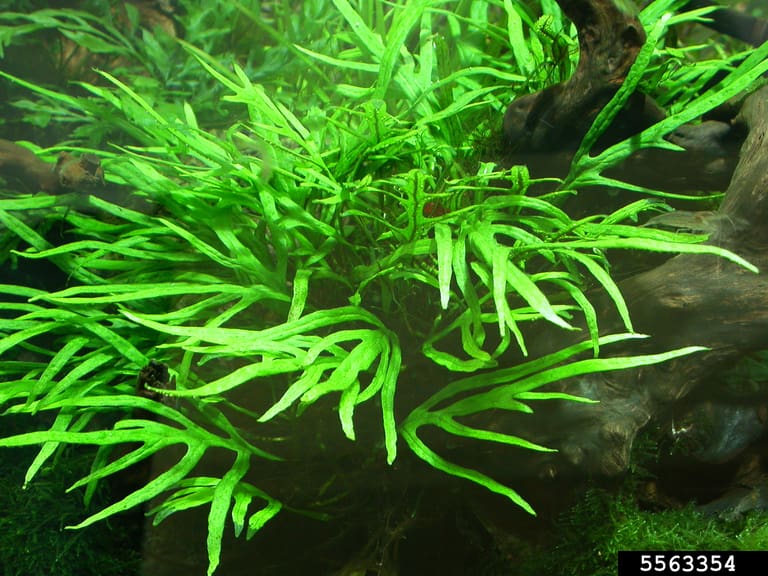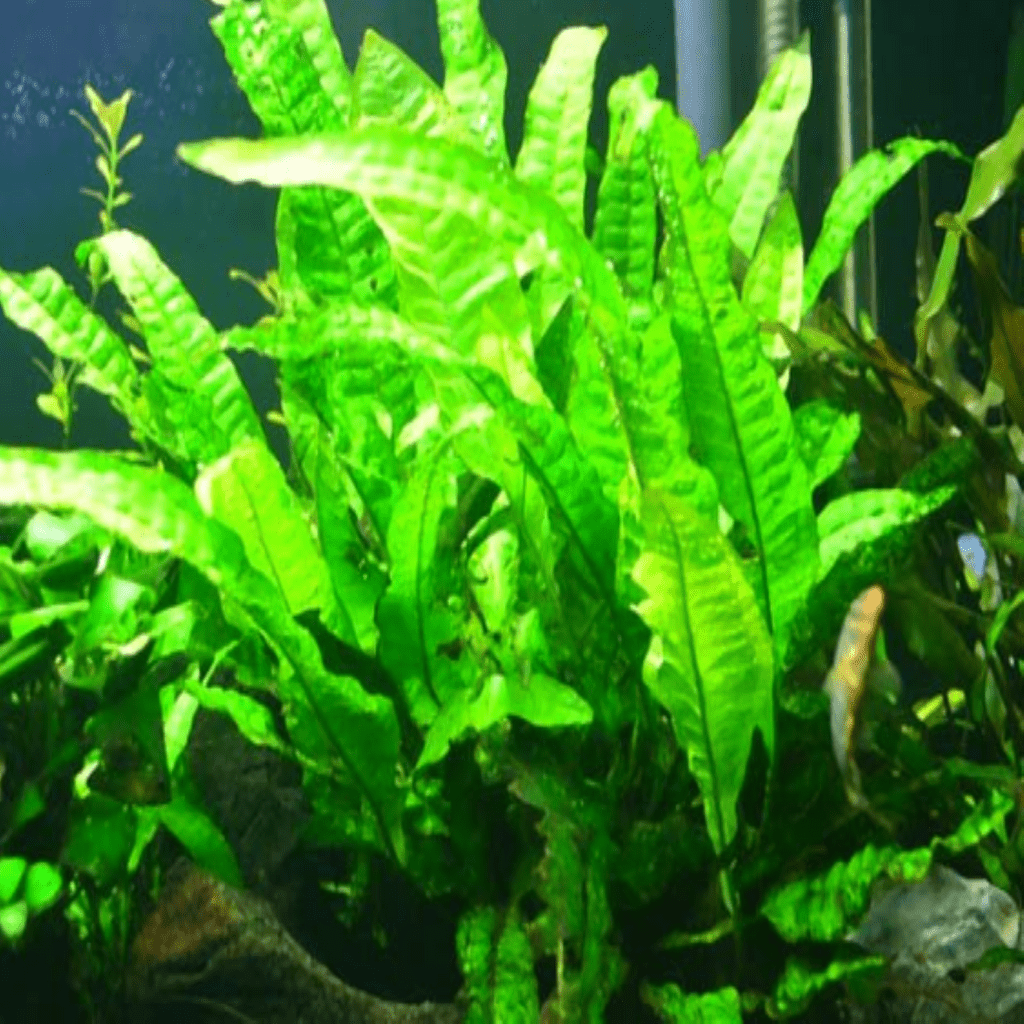The article entitled “What Is The Aquatic Weed Leptochilus Pteropus” aims to elucidate on the true nature and properties of this often misunderstood aquatic vegetation. As you explore this piece, you will gain a deep understanding of its taxonomy, reproduction, growth patterns, as well as its ecological significance. Furthermore, you’ll develop a new appreciation for this aquatic plant’s role in various ecosystems and perhaps reconsider its label as a mere ‘weed’. Essential knowledge not just for botanist or ecologists, but for anyone with a curiosity for nature’s nuances, the article presents a compelling case about the multifaceted Leptochilus Pteropus.

Overview of Leptochilus Pteropus
As an important member of the aquatic vegetation, Leptochilus Pteropus presents both opportunities and challenges to its environment. In understanding its unique characteristics and behaviors, you will be able to appreciate its importance and determine how best to approach its cultivation and management.
Description of the aquatic weed
Leptochilus Pteropus, often referred to as an aquatic weed, is in fact a unique underwater fern that holds a certain rugged appeal. It has a characteristic brownish stalk which supports narrow elongated leaves. The varying length of these leaves and their deep green hue often make this fern a captivating addition to any underwater flora collection.
Scientific classification of Leptochilus Pteropus
As a member of the Pteridaceae, or fern family, Leptochilus Pteropus is classified under the Polypodiales order. This scientific classification reflects its unique characteristics as a fern highly adapted to underwater existence and the intricate diversity of life contained within the overall order.
Common names for Leptochilus Pteropus
Despite its scientific name, Leptochilus Pteropus is more commonly known in the plant hobbyists’ circles as ‘Java Fern’. This is attributed to its origin, which is believed to be the island of Java in Indonesia. Other common names include ‘Windeløv’ and ‘Narrow-Leaf Java Fern’, emphasizing the plant’s distinctive leaf shape and growth pattern.
Features of Leptochilus Pteropus
As with any organism, understanding the distinct features and life process of the Leptochilus Pteropus is key in appreciating the value it brings to the environment and how best to manage its growth and propagation.
Root characteristics
Contrary to many underwater plant species, the Leptochilus Pteropus does not possess functionally efficient roots for nutrient uptake. Instead, the roots primarily serve as an anchorage system ensuring the plant’s stability amidst water currents. The plant absorbs nutrients through its leaves.
Stem and leaf structure
The key distinguishing feature of Leptochilus Pteropus is undoubtedly its leaves. These elongated and narrow structures grow from a central, predominantly branched rhizome. They exhibit a deep green coloration and can reach lengths of 35 cm, while the width usually ranges between 5 to 8 mm.
Life cycle/ growth process
Leptochilus Pteropus exhibits a fascinating life cycle. As an aquatic fern, it reproduces via spores rather than seeds. Under favorable conditions, mature leaves of the fern will develop small brown spots known as sori, each one containing numerous spores. Once the sori burst open, the spores are released to propagate.

Distribution and Habitat
Although native to Southeast Asia, Leptochilus Pteropus has now spread to various parts of the globe due to its popularity among aquatic hobbyists.
Geographical locations where it’s found
Today, Leptochilus Pteropus is found in a range of locations worldwide with a diverse range of climates, such as North America, Europe and Australia, largely due to human activity. However, it retains the strongest presence in its native regions of Southeast Asia.
Type of water bodies it’s found in
Leptochilus Pteropus is most commonly found in freshwater habitats, including rivers, streams, and marshes. It has a proclivity for water currents, which helps distribute its spores to ensure propagation.
Climatic and soil conditions preferred
While robust enough to tolerate a breadth of conditions, Leptochilus Pteropus thrives best in slightly acidic to neutral pH levels. It prefers warm temperatures that range between 20 to 28 degrees Celsius. However, it doesn’t require substrate for growth, often attaching itself to rocks, driftwood, or other vegetation instead.
Cultivation and Propagation
If you are interested in adding Leptochilus Pteropus to your aquatic setup, then understanding the ideal conditions for its cultivation and effective propagation techniques is necessary.
Planting conditions needed
While adaptable to a variety of lighting conditions, Leptochilus Pteropus does best in moderate light. It is crucial not to bury the rhizome in substrate as this leads to rot and inhibits growth. Instead, attach the rhizome to a surface via thread or other means until it self-anchors.
Propagation techniques
Successful propagation of Leptochilus Pteropus is achieved by cutting the rhizome into sections, each with a few leaves, and allowing those sections to grow independently. Mature plants may also develop plantlets on their leaves that can be detached and grown separately.
Growth rate under ideal conditions
Under optimal conditions, Leptochilus Pteropus exhibits a moderate growth rate. That said, this plant’s growth is slower compared to many other aquatic plants, allowing aquarists to better manage its spread in their setups.

The Role of Leptochilus Pteropus in its Ecosystem
Even as a popular ornamental plant in aquascapes, it’s important to recognize the role Leptochilus Pteropus plays in its natural ecosystem.
Function in the food chain
Leptochilus Pteropus provides a food source for various aquatic invertebrates and some herbivorous fish species in its natural habitat. Yet, its bitter taste makes it less appealing to many fish, enhancing its survival rate.
Influence on the local habitat
As a submerged perennial, it provides cover and spawning ground for many aquatic species, enhancing local biodiversity. Its capacity for nutrient uptake from the water column also plays a role in maintaining water quality.
Interaction with other plants and aquatic life
Leptochilus Pteropus tends to co-exist well with other aquatic plant species, given its modest growth rate. It rarely out-competes other species for resources, and its lack of substantial rooting system doesn’t impede the growth of neighboring species.
Uses of Leptochilus Pteropus
Beyond its presence in nature, Leptochilus Pteropus also holds several notable uses for humans.
Applications in the aquatic industry
Within the aquatic hobbyist community, Leptochilus Pteropus is highly sought after for its unique aesthetic and easy care requirements. Its ability to thrive in a variety of water conditions makes it an excellent choice even for novice aquarium enthusiasts.
Use in water purification
In water treatment, Leptochilus Pteropus is valued for its role in nutrient uptake, particularly of nitrates. This ability qualifies it as a natural bio-filter, improving water quality in various settings.
Potential medicinal purpose
As with many plants, research is being undertaken to explore the use of Leptochilus Pteropus in traditional herbal medicine, particularly within Asian communities. Although more research is needed, initial studies suggest potential anti-inflammatory and antioxidant properties.

Potential Hazards
Despite its benefits, there are also a few hazards associated with Leptochilus Pteropus that require careful monitoring and control.
Invasive growth and impacts
While slow-growing, Leptochilus Pteropus nevertheless has the potential to become an invasive species in some ecosystems – particularly in regions where it is not native and few natural predators exist. This could potentially lead to displacement of native plants and animals.
Threats to ecology and biodiversity
The spread of Leptochilus Pteropus outside of its native habitat threatens to disrupt local biodiversity. For example, an unchecked growth can monopolize resources, hindering the growth and development of other aquatic life.
Control measures
Harnessing Leptochilus Pteropus’ growth requires a concerted effort to ensure it doesn’t negatively impact biodiversity. This could involve regular trimming in contained environments such as aquariums and physical removal or use of herbicides in larger bodies of water where it becomes invasive.
Scientific Research on Leptochilus Pteropus
As an emblem of biodiversity, Leptochilus Pteropus is the subject of much scientific attention. Ongoing research hopes to fully explore its potential.
Past and current research
Past research has focused primarily on the ecological role and propagation of Leptochilus Pteropus. Current research continues to explore these, while also delving into new frontiers including potential medicinal applications.
Potential areas of future research
Potential areas of future research could involve investigating the plant’s potential as a carbon sequestration agent or its potential use in wastewater treatment or desalination processes.
Significant findings and their implications
Studies have found that Leptochilus Pteropus can play a significant role in mitigating nutrient pollution in freshwater bodies due to its nutrient uptake ability. This has broader implications for water treatment strategies as well as conserving and enhancing aquatic ecosystems.

Conservation of Leptochilus Pteropus
As with all forms of biodiversity, conservation of Leptochilus Pteropus is paramount, and requires concerted effort from various stakeholders.
Current conservation status
Currently, Leptochilus Pteropus is not identified as an endangered species. However, the loss of its native habitat due to deforestation and water pollution could put pressure on its wild populations.
Impact of environmental changes
Changes in water temperature, pH, and nutrient levels due to environmental pollution and climate change could pose threats to the natural habitats of Leptochilus Pteropus and ultimately impact its survival.
Strategies for conservation
Strategies for its conservation should focus on protecting and restoring its natural habitats, including controlling water pollution levels and raising awareness of its ecological importance.
Legal and Regulatory Aspects
Given its potential to both contribute and threaten the local biodiversity, several legal and regulatory aspects govern the cultivation and trade of Leptochilus Pteropus.
Regulations surrounding cultivation and trade
Trade and distribution of Leptochilus Pteropus is regulated in several regions, particularly where it is considered a non-native species. Failure to adhere to such regulations can result in penalties for traders and hobbyists alike.
Legal status in different countries
In some countries where it is deemed potentially invasive, restrictions may be put on its importation and cultivation. For instance, in the US, it is considered a federally regulated plant and permits are needed for its transport across state lines.
Role of environmental agencies
Environmental agencies play a critical role in monitoring and managing the growth and distribution of Leptochilus Pteropus, including issuing relevant permits and advisory information, initiating conservation measures, and enforcing regulations and sanctions as necessary.
In summary, Leptochilus Pteropus is an aquatic plant of notable ecological and aesthetic value. As responsible stewards of biodiversity, it is important to understand and respect its nature, cultivating it responsibly and striving to mitigate any potential harm it could pose to native ecosystems.